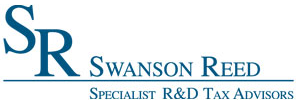Wisconsin R&D Tax Credit Filing Instructions
To claim the Research and Development (R&D) tax credit in Wisconsin, businesses must meet the requirements of the federal R&D tax credit under Internal Revenue Code (IRC) Section 41, with the key distinction that the qualified research expenses (QREs) must be incurred for research conducted within Wisconsin. The credit generally equals 5.75% of the excess QREs over a base amount, calculated as 50% of the average QREs for the three preceding taxable years. If a business had no QREs in the prior three years, the credit is 2.875% of the current year’s QREs. Wisconsin also offers enhanced credits for specific activities related to internal combustion engines and certain energy-efficient products. To make the claim, taxpayers must file Wisconsin Schedule R, Wisconsin Research Credits, along with their Wisconsin income or franchise tax return (e.g., Wisconsin Form 1, 1NPR, 2, 3, 4, 4T, 5S, or 6). This schedule is used to compute the credit amount, including any refundable portion, which for tax years beginning on or after January 1, 2024, can be up to 25% of the total R&D tax credit. Any unused, non-refundable credit may be carried forward for up to 15 years.
Wisconsin Patent of the Year – 2024/2025
Nftme LLC has been awarded the 2024/2025 Patent of the Year for revolutionizing medical data ownership. Their invention, detailed in U.S. Patent No. 12154666, titled ‘System and methods for creating non-fungible tokens’, introduces a blockchain-based approach to secure and monetize personal health information.
In a groundbreaking move, Nftme LLC has developed a system that transforms medical data – such as internal imagery, audio, or video – into non-fungible tokens (NFTs). This process involves capturing medical data, compiling it with relevant health information, and minting a unique NFT stored in a secure cryptocurrency wallet. The patient’s private key authorizes transactions, ensuring control over their digital health assets.
Beyond ownership, the system allows patients to stake their NFTs in pools related to specific medical conditions. By doing so, they can receive yield from users who access the data, creating a new avenue for patients to benefit financially from their health information. This innovation not only enhances data security but also empowers patients by giving them autonomy over their medical records.
Nftme LLC’s patented technology marks a significant step towards integrating blockchain with healthcare, offering a model where patients are central to the management and utilization of their health data.
Study Case
IVO Tech (IVO) is a leading software company specializing in employment screening software. The company was founded to provide new and innovative technologies to employment screening firms to help them improve productivity, reduce overhead, and have technological competitive advantages over otherwise similar firms.
IVO incurred qualified research expenses relating to the development of numerous innovative features in 2011-2013. IVO had never claimed the R&D tax credit before and was unaware it was performing qualified activities. After meeting with a specialist and learning more about R&D, IVO realized it was eligible for the credit.
The R&D tax credit specialist helped IVO determine its qualifying R&D activities, many of which were part of the company’s daily operations. IVO’s qualified research expenses (QRE) included:
- Development of new or improved software features to meet changing consumer preferences;
- Improvement to processing speeds
- Improvements for storage
- Testing across all supported releases to determine exposure
- Experimentation with possible fixes until an adequate solution was determined
- Creating and executing test cases to eliminate uncertainty prior to releasing software to customers
After adding up labor and supplies costs from 2011-2013, IVO spent $1.95 million on R&D for those three years. IVO claimed the Federal R&D Tax Credit and received a $45,000 tax credit.
After realizing the benefits, a sustainable methodology was also established to help IVO identify, document and substantiate eligible R&D projects and costs on an ongoing basis.
Qualified research consists of research for the intent of developing new or improved business components. A business component is defined as any product, process, technique, invention, formula, or computer software that the taxpayer intends to hold for sale, lease, license, or actual use in the taxpayer’s trade or business.
The Four-Part Test
Activities that are eligible for the R&D Credit are described in the “Four-Part Test” which must be met for the activity to qualify as R&D.
- Permitted Purpose: The purpose of the activity or project must be to create new (or improve existing) functionality, performance, reliability, or quality of a business component.
- Elimination of Uncertainty: The taxpayer must intend to discover information that would eliminate uncertainty concerning the development or improvement of the business component. Uncertainty exists if the information available to the taxpayer does not establish the capability of development or improvement, method of development or improvement, or the appropriateness of the business component’s design.
- Process of Experimentation: The taxpayer must undergo a systematic process designed to evaluate one or more alternatives to achieve a result where the capability or the method of achieving that result, or the appropriate design of that result, is uncertain at the beginning of the taxpayer’s research activities.
- Technological in Nature: The process of experimentation used to discover information must fundamentally rely on principles of hard science such as physical or biological sciences, chemistry, engineering or computer science.
What records and specific documentation did IVO Tech keep?
Similar to any tax credit or deduction, IVO had to save business records that outlined what it did in its R&D activities, including experimental activities and documents to prove that the work took place in a systematic manner. IVO saved the following documentation as evidence:
- Innovation Log
- Records of changes and bug fixes
- Photographs/ videos of testing
- Testing protocols
- Results or records of analysis from testing/ trial runs
- Tax invoices
- Receipts
- Labor time sheets
By having these records on file, IVO confirmed that it was ‘compliance ready’ — meaning if it was audited by the IRS, it could present documentation that illustrated the progression of its R&D activity, therefore proving its R&D eligibility.
Click here to view the PDF version of this case study.
A Wisconsin software development company had never before claimed the R&D Tax Credit. This project involved a multi-year study.
The Company qualified for the federal R&D Tax Credit of $341,460 and an additional $100,573 of state R&D Tax Credit in Wisconsin .
| FEDERAL | WISCONSIN | |||||
| Year | Total QREs | Credit | Total QREs | Credit | ||
| Year 4 | $1.200.000,00 | $120.960,00 | $1.200.000,00 | $44.160,00 | ||
| Year 3 | $1.000.000,00 | $98.000,00 | $1.000.000,00 | $29.723,00 | ||
| Year 2 | $850.000,00 | $83.300,00 | $850.000,00 | $26.690,00 | ||
| Year 1 | $400.000,00 | $39.200,00 | N/A | N/A | ||
| Total | $3.450.000,00 | $341.460,00 | $3.450.000,00 | $100.573,00 | ||
Choose your state


















 [...]
[...] [...]
[...]
